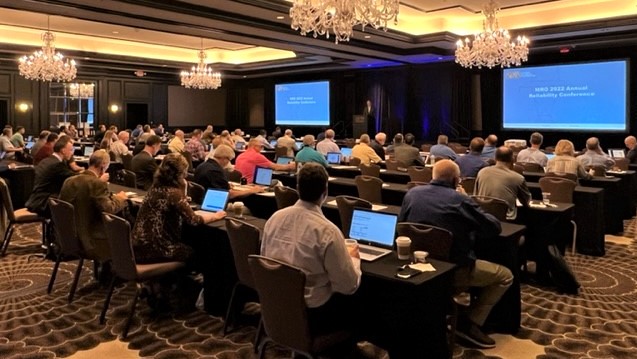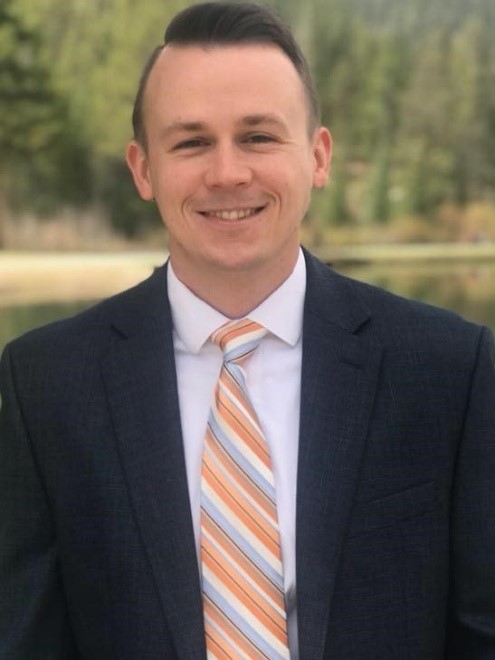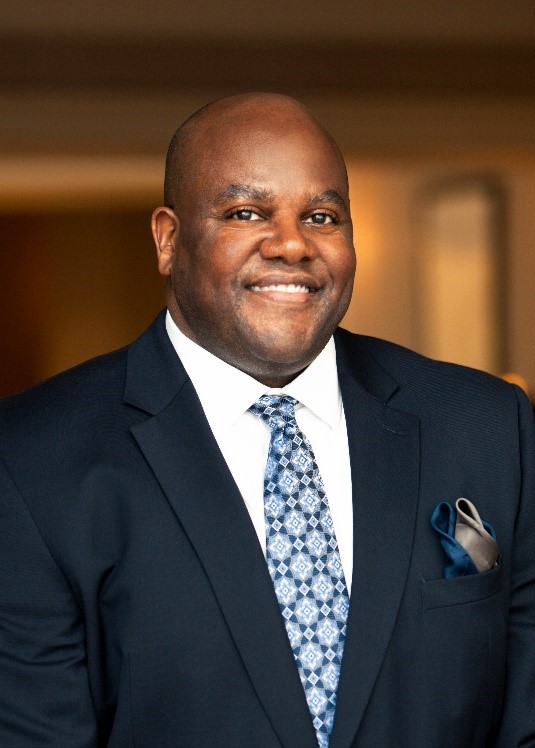
Midwest Reliability Organization’s Reliability Advisory Council (RAC) held its 2022 Reliability Conference on May 18 in Kansas City, Missouri. This hybrid conference attracted more than 300 participants in person and virtually.
Bryan Clark, Director of Reliability Analysis at MRO, opened the conference by welcoming attendees to an event designed to create an open forum for stakeholder experts in the region to learn about the top regional reliability risks, share valuable information, and collaborate. He highlighted the key characteristics of Highly Effective Reliability Organizations (HEROs) and the important work of the RAC to promote these principles across the region. Sara Patrick, MRO’s President and CEO, followed Clark’s remarks by describing how the ERO Enterprise’s wide area view of risk supports our shared vision of a highly reliable and secure North American bulk power system. She emphasized that MRO’s regional perspective is critical to assessing the North American-wide risks that are most impactful to entities in our region and prioritizing mitigation activities — the RAC is instrumental in this work.
Dallas Rowley, Director of System Operations at Oklahoma Gas & Electric and RAC member, once again did a fabulous job as the conference emcee. He began by thanking everyone for their participation—both in person and virtually—and thoughtfully guided all participants through the day’s agenda. Mark Lauby, Senior Vice President and Chief Engineer at NERC, along with Richard Burt, Senior Vice President and Chief Operating Officer at MRO, were the keynote speakers. Lauby and Burt discussed the important topic of the energy resource evolution that is underway and the four pillars needed for a successful transition:
- No/Low Carbon Energy Resources
- Adequate Transmission
- Balancing Resources
- Available Energy Supply Chain
Burt said that from 2010 to 2020, load has grown 85 GW while capacity has dropped 23 GW. In consideration of this trend, Lauby discussed how the industry’s focus needs to shift from capacity planning to energy availability. The current approach for determining the bulk power system’s ability to meet projected demand were not designed for today’s grid.
Carlos Rodriguez, Senior Vice President of Interconnections & Grid Analysis at Invenergy, gave an overview of the Grain Belt Express Transmission Project. The planned 700-mile HVDC line will use Voltage Source Converter (VSC) technology and link three of the largest U.S. power markets: SPP, MISO and PJM. Phase 1 of the project has a planned commercial operation date (COD) of 2026 and will deliver 2,500 MW to Missouri. Phase 2 has a planned COD of 2029 and will deliver an additional 1,500 MW to Indiana. The project is initially projected to deliver renewable generation interconnected to the MISO and PJM markets, but could be used to transfer power between all three markets and provide additional reliability services in the future.
Mark Ahlstrom, Vice President of Renewable Energy Policy with NextEra Energy Resources, presented the key components of the energy transition and related opportunities and challenges. He discussed how potential cost savings from renewables reflect a positive trend for consumers as the cost of renewable electricity has declined 15-20 percent annually over the past 10 years. He then highlighted that while decarbonization of the entire U.S. economy could create 4 trillion dollars in investment opportunity through 2050, challenges related to generation interconnection processes across regions, regional transmission organizations (RTOs), and utilities, must be addressed to fix the five to six year interconnection queue backlogs in order to meet decarbonization goals.
Neil Robertson, Senior Engineer Interregional Relations with Southwest Power Pool (SPP), and Ben Stearney, Lead Economic and Policy Planning with Midcontinent Independent System Operator (MISO), shared the interregional planning efforts of the two Regional Transmission Organization (RTO) footprints. They started with the MISO-SPP Coordinated System Plan (CSP), which highlights coordinated planning activities, then transitioned to the Joint Targeted Interconnection Queue (JTIQ) study. The JTIQ study has creatively addressed issues along the MISO-SPP seam that are frequently identified during the generator interconnection process. Based on the latest JTIQ study, there is over $1.6 billion dollars of transmission investment. Cost allocation will continue to be a future challenge to interregional transmission development. Key policy developments at FERC and SPP focused on transmission planning will influence future interregional project development efforts between the two RTOs.
Dr. Kevin Ma, Lead Engineer of Transmission Operations Engineering with Oklahoma Gas & Electric, gave an overview of the OG&E system, along with some foundational concepts of transmission operations. In terms of NERC compliance, the two VAR reliability standards and standard TOP-001-5 are driving the focus on ensuring existing reactive resources can maintain system voltages as prescribed by the applicable Reliability Coordinator (typically the local RTO, e.g., SPP, MISO, etc.). As system loads evolve with the electrification of transportation and the addition of high-volume data centers, combined with more renewable generation resources, it is imperative that there is more focus on controlling voltages locally. OG&E has discovered (by using Power World as a load flow tool) that performing a series of load-flow studies that are analyzed through a Python solution helps to identify optimal locations for installing both static and dynamic reactive resources throughout OG&E’s operating territory.
David Ball, Vice President of Energy Delivery Operations with American Electric Power (AEP), presented dynamic line ratings (DLR) as a viable transition from Ambient Adjusted Ratings (AAR). Ball reviewed AEP’s energy delivery operations that consist of five active control centers throughout an eleven state territory. AEP’s Energy Management System uses a third-party vendor for temperature data. Based on current local area temperatures, the transmission line ratings will adjust the MVA rating between a set of summer and winter emergency ratings. (These ratings were displayed during the presentation.) Ball explained the calculation for AAR ratings to conference attendees with an accompanying slide that demonstrated how the rating is selected based on current temperature. He also provided illustrations on how the RTO has fixed temperature adjusted ratings at a variety of temperatures from the top summer temperature to the low winter temperature. During normal operations, if there is a conflict between the Transmission Operator (TO) and the RTO, the most conservative rating will be used. If necessary, the AAR can be manually overridden to accommodate tie line coordination or to de-rate transmission equipment. The new DLR was found to be beneficial in assessing real-time ratings of transmission circuits, but only when the conductor was considered the most limiting series element of the entire circuit. There are some fundamental DLR challenges when it comes to incorporating the ratings into real-time monitoring and contingency analysis tools. Additionally, multiple DLR monitors are required along several spans of lines for a single circuit.
Overall, AEP is supportive of AARs to reliably optimize real-time ratings while simultaneously operating within the bounds of the FAC-008 System Operating Limits methodologies. It is essential that system operators can trust contingency analyses results, thus consistency in AARs will be critical moving forward.
The initial post event survey responses indicate that attendees agree the conference successfully achieved the objectives of sharing best practices and lessons learned across the region. Attendees were also pleased with the venue and an in-person option after two years of virtual only conferences. The videos from the RAC’s 2022 Reliability Conference presentations are available here. The individual presentations and full agenda packet are available on MRO’s website.
RAC members and MRO staff have already started working on topics for the 2023 Reliability Conference that will be held in St. Paul, Minnesota. If you have any interesting topics or ideas for the 2023 Conference please contact MRO staff.
– Reliability Advisory Council Members Dwayne Stradford, American Electric Power, and Derek Brown, Evergy
About the Authors:

Derek Brown, Evergy
Derek Brown is Manager, Short-Term Transmission Planning at Evergy, Inc. He holds both bachelor’s and master’s degrees in Electrical Engineering, Power Systems from Kansas State University, and is certified as a Professional Engineer. Brown is experienced and well-qualified in transmission adequacy and availability, resource adequacy, integration of renewables, essential reliability services, event analysis, system protection, and reliability assessments. His experience includes Bulk Electric System short- and long‐term systems planning, studies, modeling, and NERC compliance. He has significant expertise in power flow, short‐circuit, and dynamic studies, and overseeing periodic transmission EMS network modeling of operational transmission planning studies.

Dwayne Stradford, American Electric Power
Dwayne Stradford, Managing Director of ENRA Strategic Initiatives at American Electric Power (AEP), is an accomplished, diverse energy professional with over 28 years of power utility experience. His career has been focused on real-time transmission operations, short- and long-term transmission planning, NERC Reliability Standards (both NERC-CIP and NERC O&P), utility scale renewables integration, FERC regulatory/RTO policy, and project management. Prior to his nearly 18 years at AEP, Brown served as an electric power utility consultant – working with clients on special transmission and generation projects in all three interconnections. He currently leads AEP’s team that is addressing emerging challenges in the NERC compliance space, which is heavily involved in process improvement, risk assessment, project/program management, benchmarking and external advocacy engagement outside of AEP.